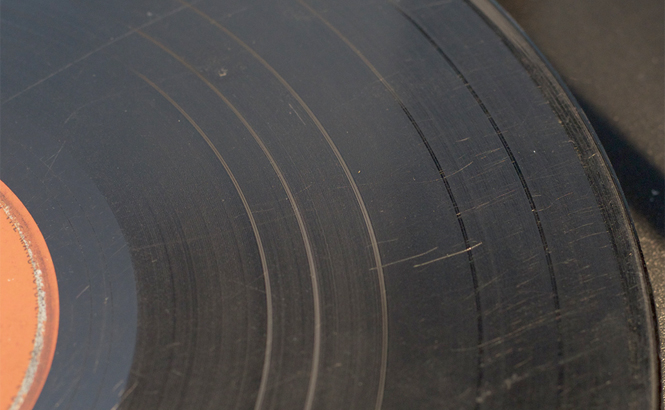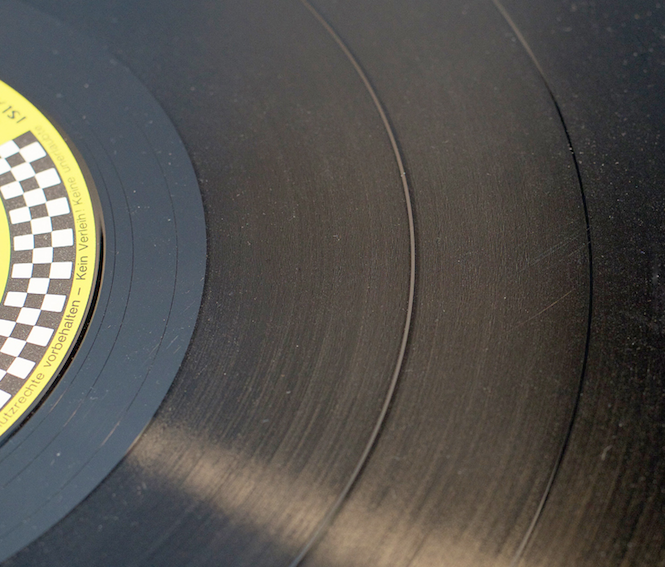Published on
November 12, 2015
Category
Features

When buying and selling vinyl, a good understanding of grading is absolutely essential. Unfortunately though, it’s not an exact science; and the inevitable element of subjectivity is often a source of dispute, especially as trading has moved online.
There is, however, a fairly universal grading system in place and a set of commonly held guidelines to help wade through murky waters – as Tom Fisher of near-mint second hand emporium Rat Records details below.
Words: Tom Fisher
Vinyl Grading System
Mint (M) – Absolutely perfect in every way. Never been played and usually sealed.
Near Mint (NM) – The record has been on a shelf between other records. The vinyl looks glossy and clearly has only been played a few times. There are no marks on the vinyl and the whole package is complete.
Excellent (E) – Same but I’d tolerate very light marks where the vinyl has been in and out of the inner sleeve a few times, or tiny signs of use generally.
Very Good Plus (VG+) – A few further faults are acceptable, but nothing that really compromises the record visually or audibly. A little rub, light inaudible marks, a little background crackle.
Very Good (VG) – It’s seen a bit of life, but is still usable. Light pops and clicks, an edge split, light visible scratches. You can still listen to it and enjoy looking at it, but it is visually and audibly USED.
Good (G) – To be honest you’re making trouble for yourself here, as Good means Bad. I’d only be selling something really desirable in this condition, with a bargain price and a full, no holds barred description to match.
Poor (P), Fair (F) Attempting to listen will be a disturbing experience. Expect major noise issues, skipping or repeating. The record itself is cracked, badly warped and has deep scratches. The cover is also approaching death.
There’s currently a bit of a dichotomy between the Record Collector gradings and those on Discogs, around ‘Excellent’.
Discogs (and Goldmine) don’t use Excellent, they jump from VG+ to Near Mint. Record Collector has no ‘Near Mint’. If you read their descriptions, ‘Excellent’ is a little less good than ‘Near Mint’.
FAQs
– Are these gradings finite?
“Surely as this record is 50 years old we should cut it some slack… those ’60s LPs look knackered but always sound great….this is ‘Excellent’ for a ska 7″…”
Sorry, they ARE finite.
– Can I grade by genre of music?
No. I find reggae fans the most forgiving about condition, perhaps due to the labyrinthine world of the Jamaican music biz. ECM customers and jazz fans generally tend towards the picky. Rock punters are somewhat midway but again, a grade is a grade.
– Do you really grade every record you buy for the shop?
No. If it’s a common record I just give the sleeve and vinyl a quick once over under strong light (see below for more on this)
– How does the grading affect the price?
Ah. There we have a fine subject for the next article. At Rat Records we have a creative approach…
Grading When Selling
You’ll need a large, flat table, with a strong overhead light, ideally daylight, or lights with daylight replacement bulbs. A big magnifying glass. A record deck set up. A cup of coffee, glass of red or a dram and some peace.
Remember you are grading the sleeve (and any bits and pieces), and then the vinyl as two separate entities.
Unless I had something sealed I’d avoid ‘Mint’. You’re asking for a return or a complaint. I’m wary about ‘Near Mint’ on Discogs. It better be good or I’m inclined to say VG+. On eBay I’m happy to say ‘Excellent’ if it is. Either way I add a line of description to my listing below the grading.
Have a look at the sleeve from various angles. Front, back, corners, edges, laminate. Look for damage, wear, splits, creases, bends, dirt. You can wipe a sleeve with a clean, damp cotton cloth, and a clean soft white eraser will help on ringwear and grime on a light coloured sleeve. It may even get off some writing in ballpoint.
Next, does it have the original inner, inserts or anything else it needs to be complete? What is their condition?
Take the record out of the sleeve completely, thumb on the edge, fingers on the label. Have a look from various angles. Form a general impression, is it lovely and glossy or has it lived a bit? Any serious damage?
If you have a record cleaning machine like us, this would be the time to use it. Either way, spin it on a turntable and look from the edge to check for warps.
Have a look at the label, any writing or marks? Check exactly what you have here using the catalogue number, matrix numbers in the runout etc.
Now have a really good look at the vinyl, use your big magnifying glass on any damaged areas. Form your opinion about the condition.
Put the record back on the turntable, clean off the dust with an antistat brush or similar and put the needle through the intro before the first track, a few tracks here and there, a couple of gaps between tracks and especially any faults or damage you’ve identified. You want it loud or use some decent but undynamic headphones. If this is a really expensive record I’d just listen to the whole thing whilst grading other records, and make little notes about faults for the description.
Now you’ve done all this you can clarify your first impressions. I would add that faults can be cumulative, a rub here, a mark there can pull down the grade as much as one glaring piece of damage.
Grading When Buying
Ok, so now you’re on the frontline and you don’t have a mobile lab with you. You’re in a jumble sale, at a boot fair or a street market. If you’re lucky you’re riffing through the new in stock in Rat Records on a Saturday.
If time is not on your side, get a general impression of the seller and their stock as a whole. First impressions count – is everything a bit ‘used’ looking? It’s probably a bit bashed then.
Glance at the sleeve, front, back, edges and corners.
Take the record right out of the sleeve. Look at it from a few angles in the best light you can get. Quick check for a warp.
Are the inner sleeve and inserts you were expecting there?
In this situation I generally only use ‘Excellent’, ‘Very Good’ and ‘Good’. In my head. I can refine this further when I’ve got it home. I’m grading for a price negotiation….
If you have a bit more time, apart from the examination above I tend to up the psychological profiling a bit.
When I’m invited into an immaculate house with cream carpets and asked to remove my shoes I’m already getting a good feeling about the condition of the record collection. It’s also helpful to know if the records belong to person selling them to you (and not their mate or dead dad). If so, then ask where they got them from, did they generally buy new or used, how were they kept…. Again, I like to hear about the records being someone’s pride and joy: they always used a Linn Sondek, no-one else was allowed to touch them and so on. All these things are pointing to the condition being strong so you can hope that the grading you see on the spot with a quick examination will hold up once you get them back to your grading lair.
Alternatively if I’m on my knees in a dark, dusty and damp garage (or on one occasion, boat) and the records generally look VG, they probably won’t once you get them home. Get that drink and start to go over them.
Finally, try to divorce yourself from that fact that you really want this record and are willing it to be ‘Near Mint’. Keep some perspective. It’s only a record. How much sweeter would it be if you got a better copy, for less, later, by being a little patient.









